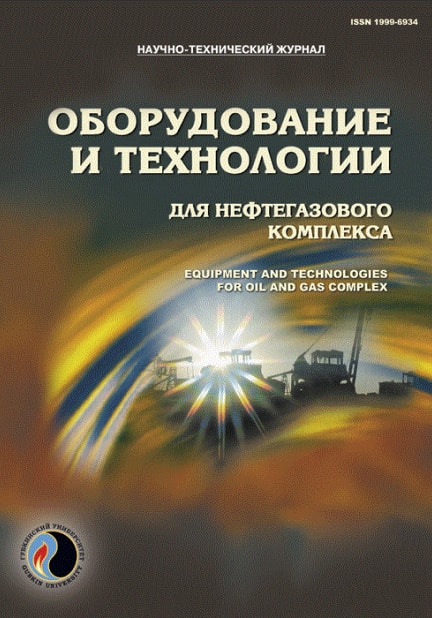Optimization of designs and trajectories of projected wells based on the results of 1D geomechanical models on the example of the Caspian Sea oil fields
UDC: 622.24.001:004(262.81)
DOI: 10.33285/1999-6934-2023-6(138)-29-35
Authors:
KLYKOV PAVEL I. 1
1,
ZVEREV GLEB V. 1
1,
PETRENKO IGOR A. 1
1,
NAGOVITSIN ALEXANDER V. 1
1
1 PermNIPIneft, Perm, Russia
Keywords: 1D geomechanical modeling, wellbore stability calculation, well construction complications, hydraulic calculations, the Caspian Sea shelf, horizontal drilling, well design, the Jurassic deposits
Annotation:
When constructing directional and horizontal wells in the fields located within the Kazakhstan sector of the Caspian Sea, there registered complications associated with the well walls stability drilled in difficult geological conditions. The problem solution requires a comprehensive and timely approach to wells construction. The purpose of this work is development of one-dimensional (1D) geomechanical models for the fields under research with subsequent calculation of projected wells stability. The article considers a brief description of deposits (administrative location, tectonic features of the section structure, oil and gas content). The results of analyzing drilling events are presented. Complications during the drilling process are noted. The technique of one-dimensional geomechanical modeling is considered, including the determination of dynamic and static elastic-strength properties of rocks, the calculation of pore pressure, vertical and horizontal stresses. Calculations of the wells stability based on the results of 1D geomechanical modeling have been obtained and analyzed. Using the existing mechanical model of the environment and taking into account the geometry of the designed well profile, based on stratigraphic breakdowns, the well logging data was transferred from the reference well to the designed well. The obtained one-dimensional geomechanical models were subjected to engineering hydraulic calculations which included: determination of the beginning of mud loss gradient, the breakout pressure and the hydraulic fracturing at various angles and drilling azimuths. Recommendations have been developed for accident-free wells construction in the fields under study, including optimization of designs and trajectories of planned wells.
Bibliography:
1. World Stress Map. – URL: https://www.world-stress-map.org
2. Zoback M.D. Reservoir Geomechanics. – Cambridge University Press, 2007. – P. 127–137.
3. Baykovskiy D.I. Opredelenie optimal'nogo napravleniya traektorii bureniya gorizontal'nogo stvola s uchetom vektora glavnykh gorizontal'nykh napryazheniy dlya povysheniya effektivnosti gidravlicheskogo razryva plasta // Oborudovanie i tekhnologii dlya neftegazovogo kompleksa. – 2022. – № 6(132). – S. 40–48. – DOI: 10.33285/1999-6934-2022-6(132)-40-48
4. Makovey N. Gidravlika bureniya / per. s rum. V.I. Balabana; red. A.I. Litvinov. – M.: Nedra, 1986. – 536 s.
5. Raschet ustoychivosti i optimizatsiya traektoriy proektnykh skvazhin na osnove 3D-geomekhanicheskogo modelirovaniya / P.I. Klykov, A.V. Nagovitsin, G.V. Zverev, I.A. Petrenko // Territoriya Neftegaz. – 2023. – № 5-6. – S. 20–26.

